The beautiful island of Koh Tao forms part of the Chumphon Archipelago on the western shore of the Gulf of Thailand. This idyllic island is a tropical paradise with white sand beaches fringed with palm trees, rugged cliffs, and stunning sunsets. Koh Tao’s underwater scenery is just as spectacular with coral encrusted rock pinnacles, vibrant reefs, and some great shipwrecks. Koh Tao offers the opportunity to see passing pelagics including whale sharks, leopard sharks, and manta rays. When you’re not looking out to the blue you’ll be mesmerized by the plethora of colourful reef fish all around you.

Koh Tao has something for every level of diver. You’ll find calm protected bays suitable for beginners and incredible drifts, pinnacles, and deep dives for more experienced divers.
Diving in Koh Tao offers warm waters (84°F/29°C), and equally excellent visibility. When you are not underwater, you’ll find limitless opportunities on land. Enjoy everything from trekking and exploring to chilling out in a hammock while watching the sunset over the ocean.
What can you see while diving in Koh Tao? Coming up next are just a few of the underwater highlights of this stunning destination.
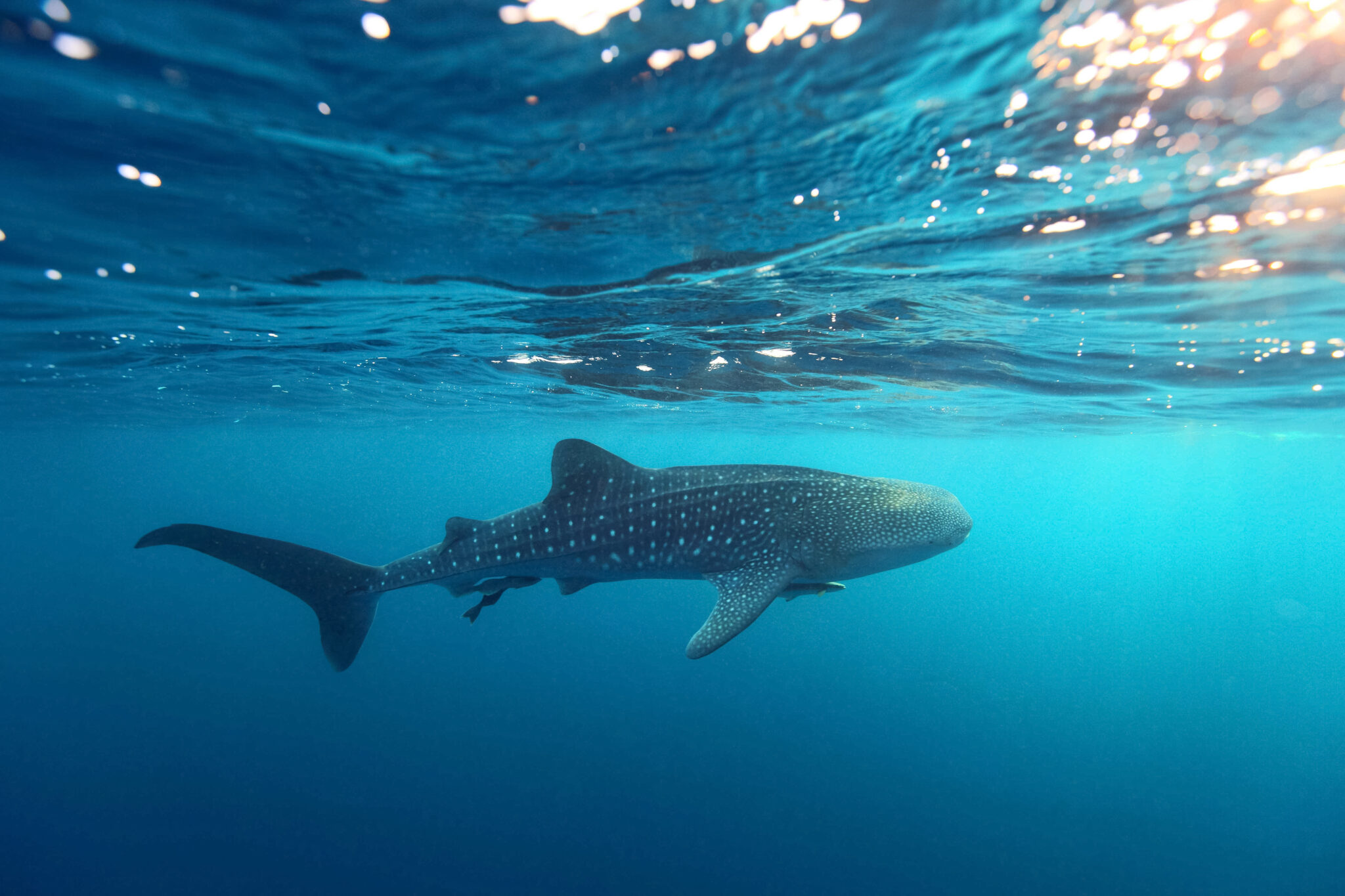
This is probably one of the most iconic species that divers from around the world hope to see. Although these graceful giants can be seen all year round, during the months of April and May whale sharks are frequently seen at Chumphon Pinnacle, Southwest Pinnacle, and Sail Rock. Look out for them cruising through the blue, feeding, and being cleaned by cleaner wrasse.

Green sea turtles (Chelonia mydas) are a highlight of diving at sites such as Tanote Bay and Shark Bay. These beautiful turtles can live from 80 to 100 years making them one of the longest living of all marine species.
There are 29 known species of barracuda, and in Koh Tao you’ll most commonly see impressive schools of chevron barracuda and secondly, individual predatory giant barra`cuda. Whether it’s a school or a huge hungry looking giant, they never fail to impress.
Blacktip Reef Sharks (Carcharhinus melanopterus) are a medium-sized shark that is currently listed by the IUCN (The International Union for Conservation of Nature) as vulnerable. However, in Koh Tao divers are fortunate to see these sharks cruising around the reefs – often in numbers. Regardless of their status, blacktips are a great part of any Koh Tao underwater adventure.
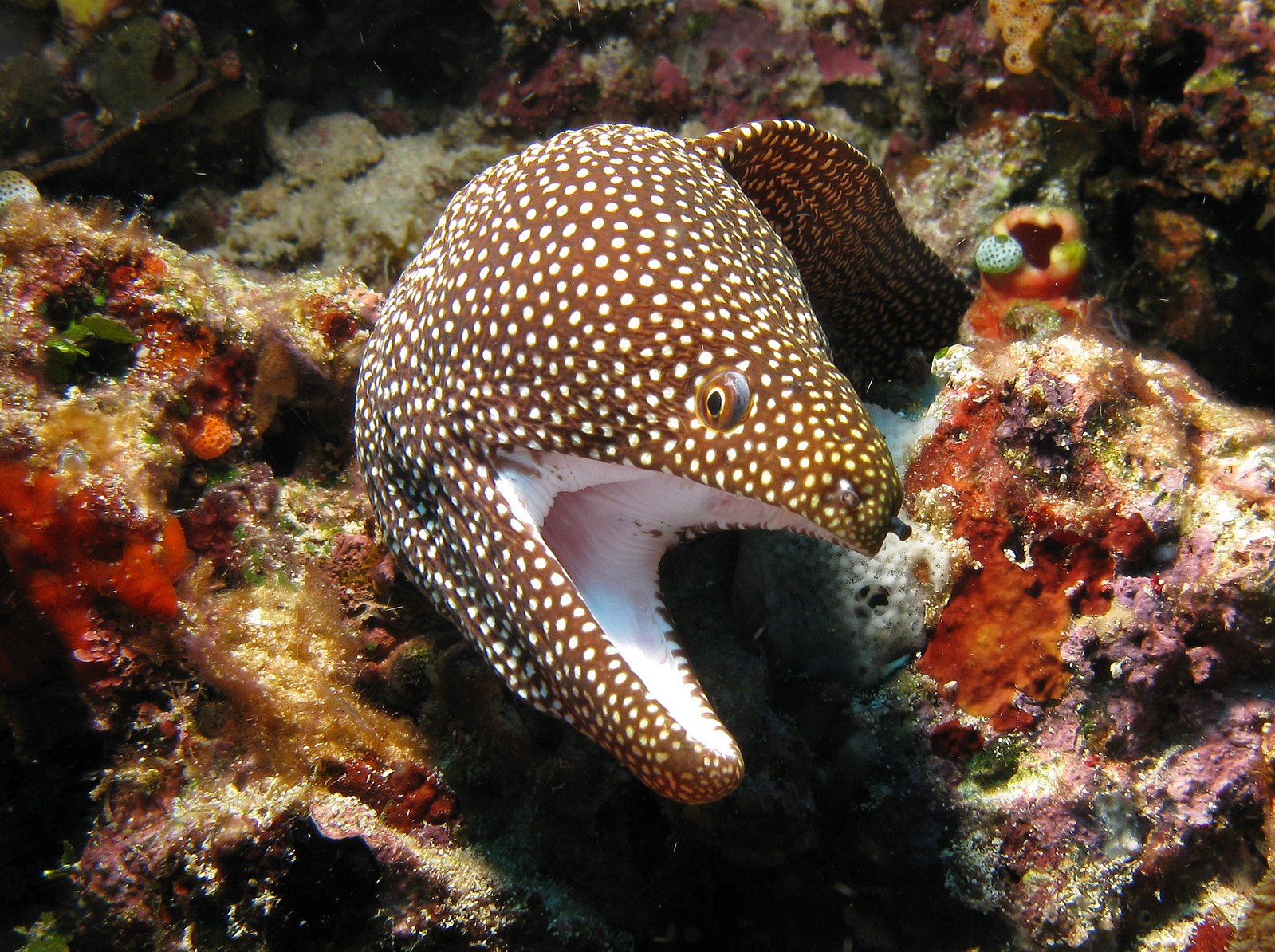
Moray eels can be spotted at almost all Koh Tao dive sites. White eyed, white mouthed, giant, and starry morays are often peering out from under ledges and in crevices. Try night dives in Koh Tao and witness morays swimming freely as they hunt out prey on the reef.
Did you know that morays are often misunderstood? They open and close their mouths which can be perceived as a threat to bite, however, they are simply breathing. The opening and closing of their mouths forces water through their gills ensuring they have the oxygen they need to survive!
If diving Twins or Southwest Pinnacle there are the best chances of a blue spotted stingray sighting. During the daytime these rays are exceptionally shy and spend their time resting on the sand – usually underneath ledges or in recesses. Despite their bright blue spots, they are masters of camouflage that can burrow their way under the sand.
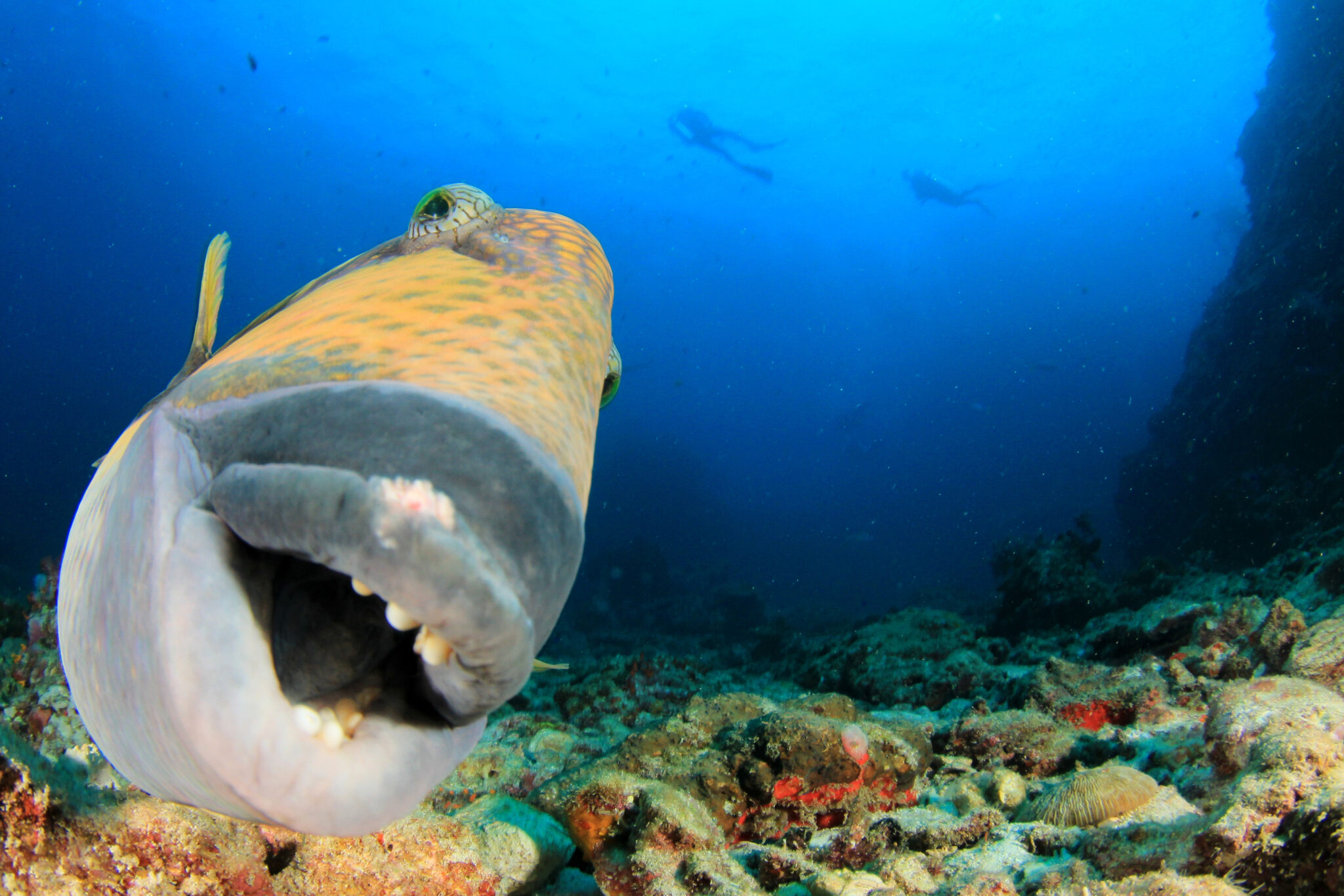
Titan triggerfish are the largest species of triggerfish. They can be spotted at dive sites across Koh Tao and are highly distinctive due to their swimming style. Have you spotted that they swim using a waving motion in their dorsal and anal (tail) fins? This swimming technique means they are one of the only fish that can swim forward, backward, and even hover over the reef!
You might notice the triggerfish’s territorial nature when diving in koh Tao. They nest on the reef and, during the breeding period, they will protect their nest with verocity from anything that swims over the nest, until it is out of the vicinity.
Although Koh Tao’s dive sites are home to a multitude of cephalopods, the broadclub cuttlefish (Sepia latimanus) is one of the most commonly spotted species that you are likely to encounter. Watching two cuttlefish come together and mating is a highlight of diving here. If they are not mating, look out for females carefully laying eggs among the branching corals. You might even spot clutches of eggs while swimming by!
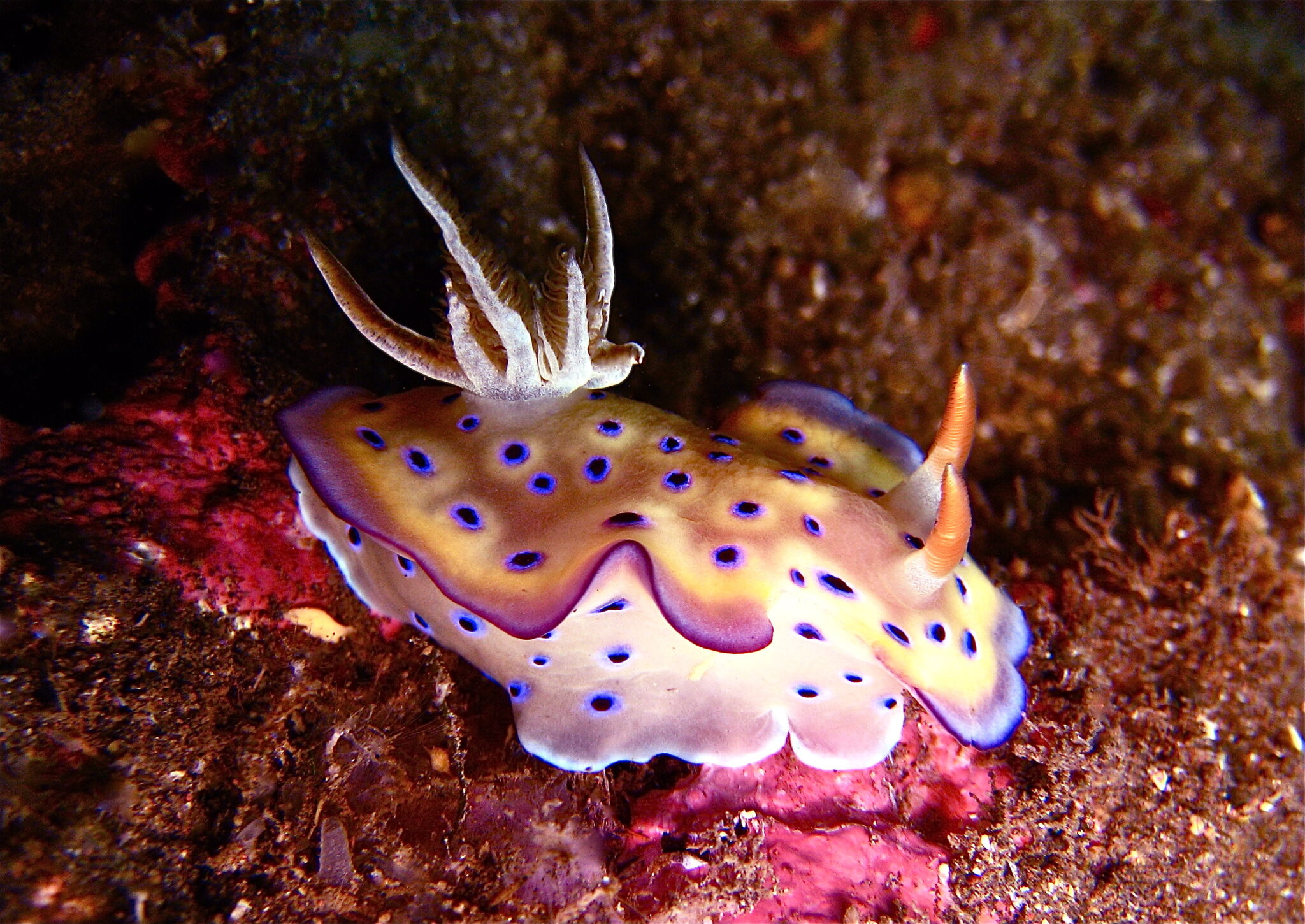
If you are a macro underwater photographer, then Koh Tao does not disappoint. You’ll find an array of nudibranch in a rainbow of colors. The species change seasonally throughout the year and it’s often possible to see ribbons of nudibranch eggs on the reef. How many species does Koh Tao offer? It’s impossible to count!
While this might seem like an obvious choice, there are multiple species of anemonefish to be found around Koh Tao. These characterful fish will defend their homes fiercely. Did you know that the largest anemonefish on any anemone is the female? Other anemonefish around her are males and when the female passes away, the largest male changes gender to female and takes her place!
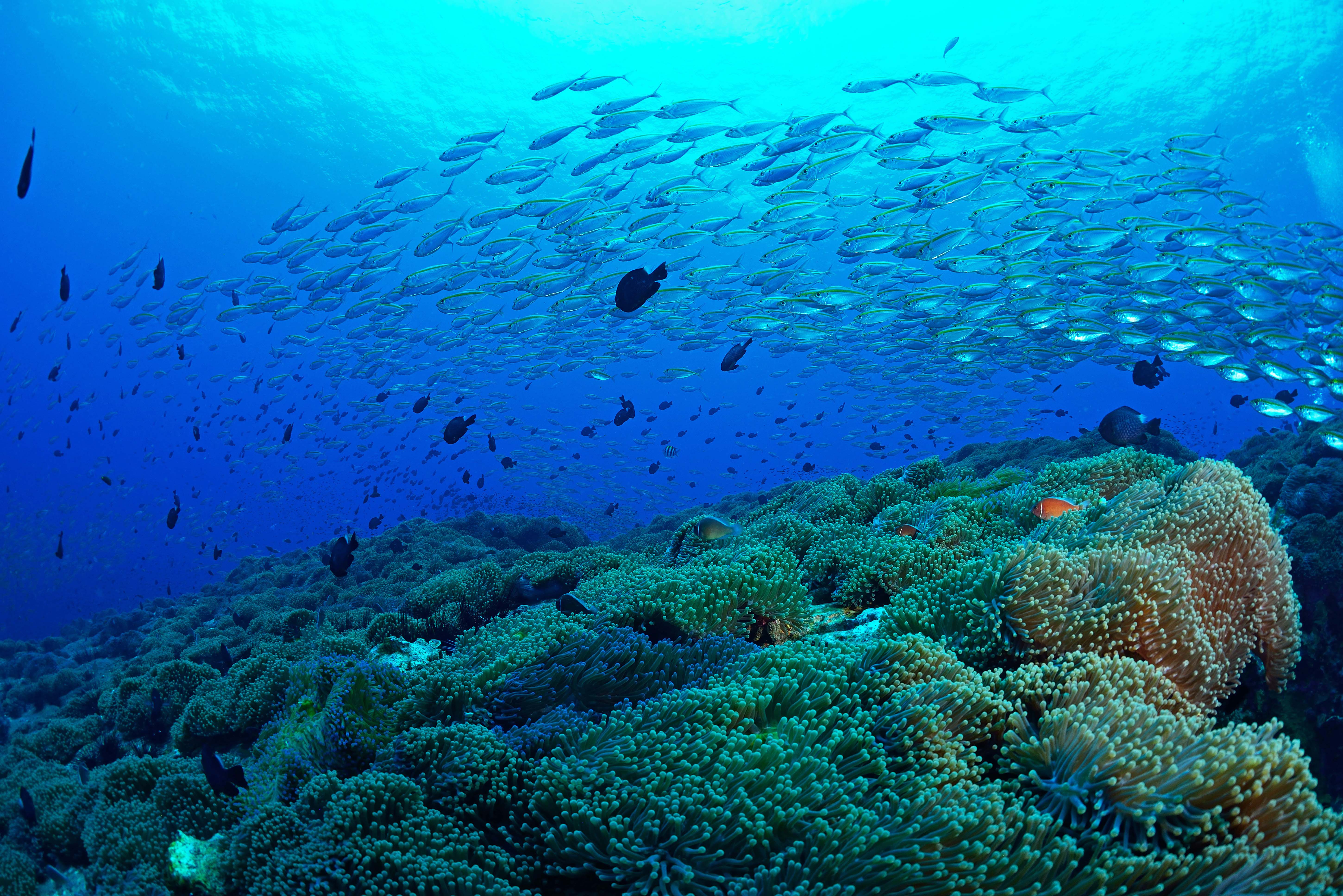
In conclusion, whether you want to dive with the largest fish in the world to tiny nudibranchs, diving in Koh Tao is full of surprises. If you are ready to book your trip, head over to PADI Travel now.
Share This